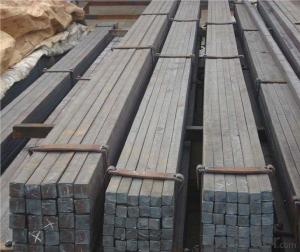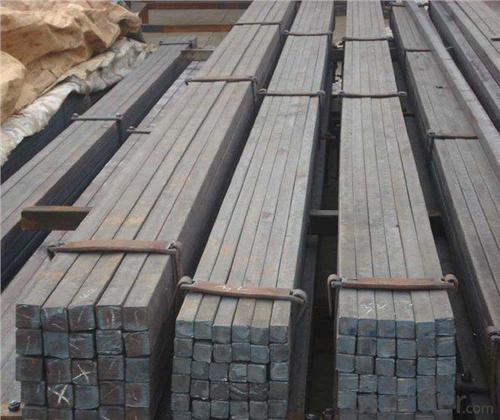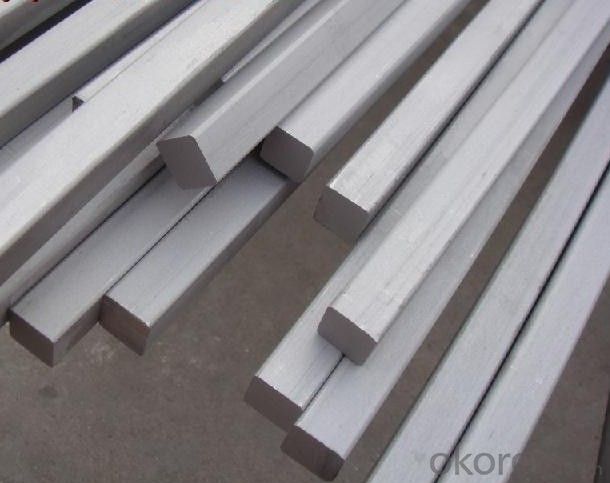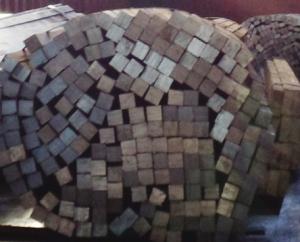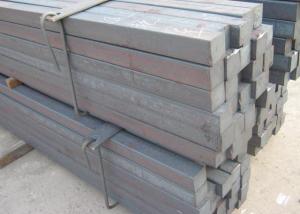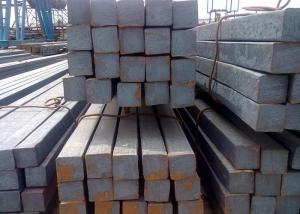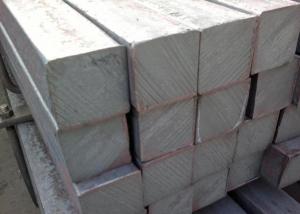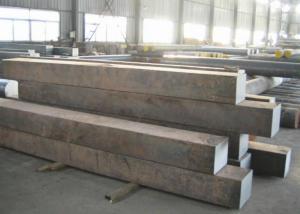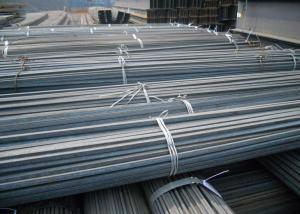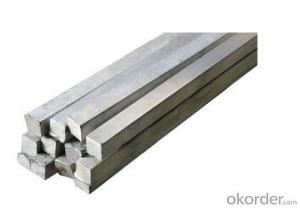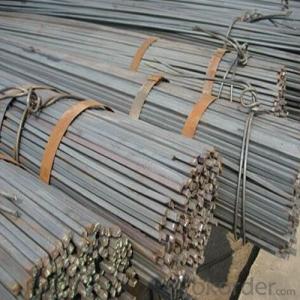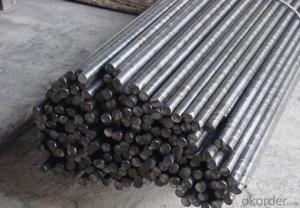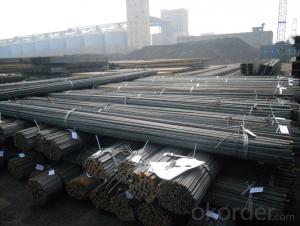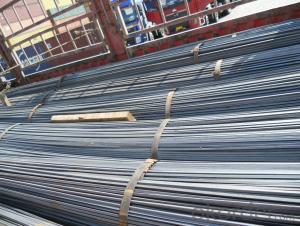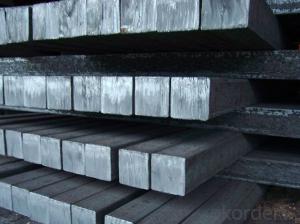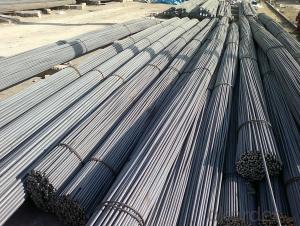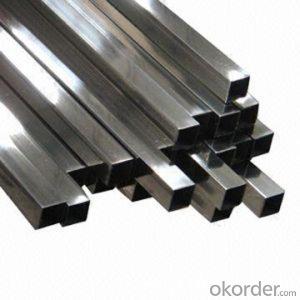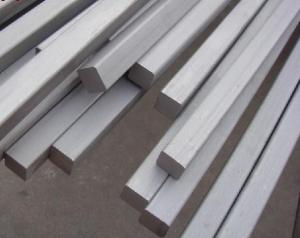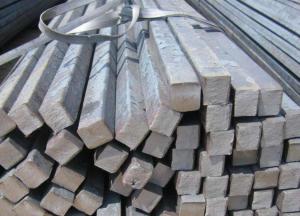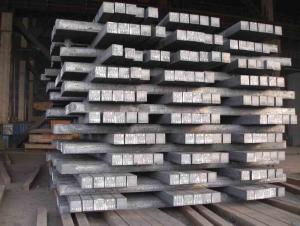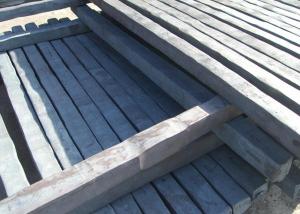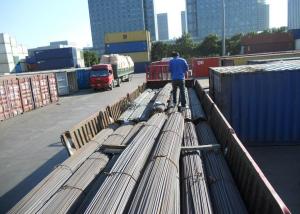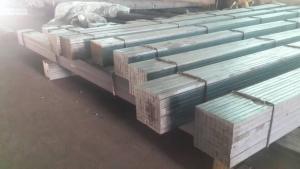Hot Rolled Square Steel Bar Q235, SAE1020, SAE1045
- Loading Port:
- Shanghai
- Payment Terms:
- TT or LC
- Min Order Qty:
- 25 m.t.
- Supply Capability:
- 200000 m.t./month
OKorder Service Pledge
OKorder Financial Service
You Might Also Like
Product Description:
OKorder is offering Hot Rolled Square Steel Bar Q235, SAE1020, SAE1045 at great prices with worldwide shipping. Our supplier is a world-class manufacturer of steel, with our products utilized the world over. OKorder annually supplies products to European, North American and Asian markets. We provide quotations within 24 hours of receiving an inquiry and guarantee competitive prices.
Product Applications:
Hot Rolled Square Steel Bar Q235, SAE1020, SAE1045 are ideal for structural applications and are widely used in the construction of buildings and bridges, and the manufacturing, petrochemical, and transportation industries.
-The Square Steel is normally used as structure steel.
-Row material for other structure steel like steel angles, channels, I-beams, H-beams, etc…
Product Advantages:
OKorder's Hot Rolled Square Steel Bar Q235, SAE1020, SAE1045 are durable, strong, and resist corrosion.
Main Product Features:
· Premium quality
· Prompt delivery & seaworthy packing (30 days after receiving deposit)
· Corrosion resistance
· Can be recycled and reused
· Mill test certification
· Professional Service
· Competitive pricing
Product Description:
Specifications of High Quality Square Steel Bar Q235, SAE1020:
-Standard: GB,
-Grade: Q195/Q235 or equivalent.
Chemical Composition:
-Chemical Composition. Q195
Standard | Grade | Element (%) | ||||
GB | Q195 | C | Mn | S | P | Si |
0.06~0.12 | 0.25~0.50 | ≤0.050 | ≤0.045 | ≤0.30 | ||
-Chemical Composition. Q235
Standard | Grade | Element (%) | ||||
GB | Q235B | C | Mn | S | P | Si |
0.12~0.20 | 0.30~0.70 | ≤0.045 | ≤0.045 | ≤0.30 | ||
Measures and Tolerances of Square Steel Bar:
(The section of Square Steel Bar)
-The length of a side and the theoretical weight of Square Steel.
Length of a side(a, mm) | Theoretical weight(kg/m) | Length of a side(a, mm) | Theoretical weight(kg/m) |
6 | 0.283 | 32 | 8.04 |
7 | 0.385 | *33 | 8.55 |
8 | 0.502 | 34 | 9.07 |
9 | 0.636 | *35 | 9.62 |
10 | 0.785 | 36 | 10.17 |
11 | 0.950 | 38 | 11.24 |
12 | 1.13 | 40 | 12.56 |
13 | 1.33 | 42 | 13.85 |
14 | 1.54 | 45 | 15.90 |
15 | 1.77 | 48 | 18.09 |
16 | 2.01 | 50 | 19.63 |
17 | 2.27 | 53 | 22.05 |
18 | 2.54 | *55 | 23.6 |
19 | 2.82 | 56 | 24.61 |
20 | 3.14 | *58 | 26.4 |
21 | 3.46 | 60 | 28.26 |
22 | 3.80 | 63 | 31.16 |
*23 | 4.15 | *65 | 33.17 |
24 | 4.52 | *68 | 36.3 |
25 | 4.91 | 79 | 38.49 |
26 | 5.30 | 75 | 44.16 |
*27 | 5.72 | 80 | 50.24 |
28 | 6.15 | 85 | 56.72 |
*29 | 6.60 | 90 | 63.59 |
30 | 7.06 | 95 | 70.85 |
*31 | 7.54 | 100 | 78.50 |
Notes:
1, The theoretical weights in the list, base on the density of 7.85 g/cm3.
2, The numbers with *mean that they are not regulars or we don’t offer them.
-The allowed tolerance of Square Steel:
Length of a side(mm) | Allowed Tolerance | ||
Group1 | Group2 | Group3 | |
5.5~7 | ±0.20 | ±0.30 | ±0.40 |
7~20 | ±0.25 | ±0.35 | ±0.40 |
20~30 | ±0.30 | ±0.40 | ±0.50 |
30~50 | ±0.40 | ±0.50 | ±0.60 |
60~80 | ±0.60 | ±0.70 | ±0.80 |
80~110 | ±0.90 | ±1.0 | ±1.1 |
110~150 | ±1.2 | ±1.3 | ±1.1 |
150~190 | ―― | ―― | ±2.0 |
190~250 | ―― | ―― | ±2.5 |
Packaging & Delivery of Hot Rolled Square Steel Bar Q235, SAE1020, SAE1045:
-Packing Detail: The products can be packed in bundles by steel wires.
-Marks:
1, Tag marks: the tag marks will be tied up to each bundle of the products. The information is usually including supplier’s logo and name, product name, made in China, products’ specifications, the painted color and other information requested by customers.
2, Color marks: we will paint both ends of the bundles of these products to make sure that they are more evident. It’s will be more convenient for the customers to distinguish them at the destination port.
-Delivery Detail: 30~45 working days after receive buyer’s T.T. or L/C.
Transportation:
-The products can be delivered by bulk vessel or by container. As for container, products with the length of 6m will be loaded in 20’ container, with 9m or 12m, in 40’ container.
-The maximum quantity of loading of container is 25 tons.
-The products usually are transported to the nearest port from the production place.
Payment:
-Invoicing on theoretical weight or actual weight a s customer’s request.
-FOB, CFR or CIF.
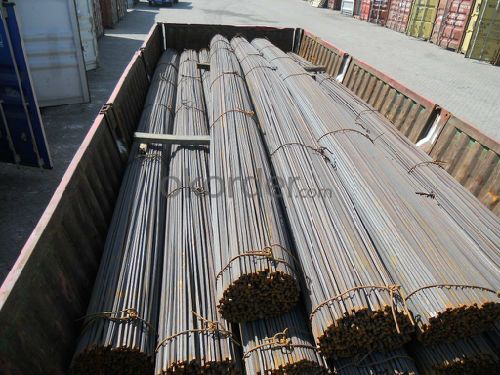
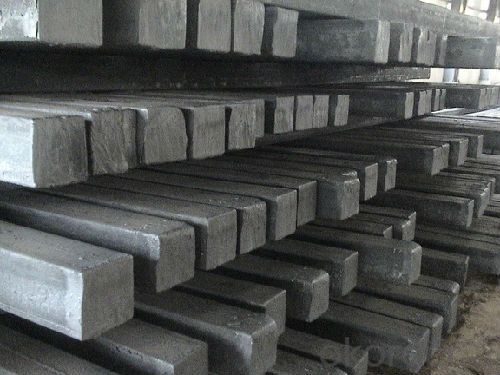
FAQ:
Q1: How soon can we receive the product after purchase?
A1: Within three days of placing an order, we will begin production. The specific shipping date is dependent upon international and government factors, but is typically 7 to 10 workdays.
Q2: The products are invoicing on theoritical weight or on actual weight?
A2: We can do it in both manners, according to the customers' request.
Q3: How do we guarantee the quality of our products?
A3: We have established an advanced quality management system which conducts strict quality tests at every step, from raw materials to the final product. At the same time, we provide extensive follow-up service assurances as required.
- Q: What are the different types of steel squares?
- There are several different types of steel squares that are used in various applications. One of the most common types is the framing square, also known as a carpenter's square. This type of square has a long arm and a shorter arm that meet at a 90-degree angle. It is used by carpenters and construction workers to ensure accurate right angles when framing walls, roofs, and other structures. Another type of steel square is the combination square. This square has a 90-degree angle like the framing square, but it also has an adjustable ruler attached to one of the arms. This allows the combination square to be used for measuring and marking angles other than 90 degrees, as well as for straight lines and depths. It is commonly used in woodworking and metalworking. A try square is another type of steel square that is used primarily for woodworking. It is similar to a framing square, but it is smaller and has a shorter arm. Try squares are typically used to mark and check right angles when working with smaller pieces of wood, such as for joinery or cabinetmaking. Machinist squares are precision tools used in metalworking and machining. They are often made of hardened steel and have a very high degree of accuracy. Machinist squares are used to check the squareness and alignment of machine parts, as well as for layout and marking in metalworking processes. There are also specialized steel squares, such as rafter squares or roofing squares, which are used by carpenters and roofers to calculate and mark angles for roof rafters and other roofing elements. These squares often have additional markings and features specific to roofing applications. In summary, the different types of steel squares include framing squares, combination squares, try squares, machinist squares, and specialized squares for roofing. Each type of square has its own specific purpose and is used in different industries and applications.
- Q: How do you use a steel square to determine the angle of a miter cut?
- To use a steel square to determine the angle of a miter cut, follow these steps: 1. Start by placing the steel square against the edge of the material you want to cut at a 90-degree angle. Ensure that the long side of the square is aligned with the material's edge. 2. Once the square is properly positioned, draw a line along the inside edge of the square using a pencil or a marker. This line represents the 90-degree angle. 3. Now, slide the steel square along the material's edge until the desired angle for the miter cut is achieved. For instance, if you want a 45-degree miter cut, align one of the square's edges with the previously drawn line at the 90-degree angle. 4. Once the steel square is aligned for the desired angle, draw another line along the inside edge of the square. This new line represents the angle of the miter cut. 5. Finally, use a straight edge or a ruler to connect the starting point of the 90-degree line with the endpoint of the miter cut line. This will create a cutting guide that accurately represents the angle for the miter cut. By using a steel square in this manner, you can easily determine and mark the correct angle for a miter cut, ensuring accurate and precise cuts in your woodworking or construction projects.
- Q: How is a steel square different from a carpenter's square?
- Both construction and woodworking employ measuring tools such as steel squares and carpenter's squares, but they possess distinct characteristics. To begin with, the manner in which these squares are constructed and the materials used diverge. The steel square, as its name suggests, is fashioned entirely from steel, rendering it heavier and more resilient. Conversely, a carpenter's square typically consists of wood, supplemented with a metal edge or lip to guarantee precision. Regarding design, a steel square boasts a lengthier body with a broader base and an L-shaped structure incorporating two arms that intersect at a right angle. One arm serves as a measuring device, while the shorter arm aids in achieving accurate cuts or angles. Conversely, a carpenter's square, also referred to as a try square, possesses a shorter body with a right-angled shape, rendering it suitable for assessing corner precision and marking 90-degree angles. Another distinction lies in functionality. The steel square exhibits greater versatility, facilitating measurement, angle marking, and cut line layout. It often includes supplementary features like a level, protractor, and scribe, making it an exhaustive tool for diverse construction endeavors. Conversely, a carpenter's square principally serves the purpose of verifying right angles and ensuring squareness in woodworking projects. Carpenters and cabinetmakers commonly employ it for layout tasks, aligning joinery, and verifying the accuracy of cuts and joints. In summary, while both steel squares and carpenter's squares fulfill analogous objectives, their disparities reside in their construction, design, and functionality. Steel squares excel in durability and versatility, whereas carpenter's squares represent simpler tools primarily employed for assessing right angles and guaranteeing precision in woodworking projects.
- Q: Can a steel square be used for checking the alignment of framing studs?
- Yes, a steel square can be used for checking the alignment of framing studs. The square's right angles and straight edges can help ensure that the studs are properly aligned and perpendicular to each other.
- Q: What are the dimensions of a standard steel square?
- The dimensions of a standard steel square typically vary depending on the manufacturer and specific model, but it is commonly available in sizes ranging from 6 inches to 12 inches on each side.
- Q: How do you use a steel square to find the length of a diagonal?
- To use a steel square to find the length of a diagonal, you would need to follow a few steps. First, place the steel square on the corner of the object or surface that you want to measure. Make sure that one edge of the steel square aligns with the horizontal side of the object, and the other edge aligns with the vertical side. Next, use a measuring tape or ruler to measure the distance from the corner of the object to the point where the steel square intersects the diagonal. This distance represents the length of the horizontal side of the object. Then, measure the distance from the corner of the object to the point where the steel square intersects the other side of the object. This distance represents the length of the vertical side of the object. Once you have both measurements, you can use the Pythagorean theorem to calculate the length of the diagonal. The Pythagorean theorem states that in a right triangle, the square of the hypotenuse (the longest side) is equal to the sum of the squares of the other two sides. In this case, the diagonal is the hypotenuse, and the horizontal and vertical sides are the other two sides. You can use the formula c^2 = a^2 + b^2, where c represents the length of the diagonal, and a and b represent the lengths of the horizontal and vertical sides respectively. By plugging in the values of the horizontal and vertical lengths into the formula, you can solve for the length of the diagonal. This will give you an accurate measurement using a steel square.
- Q: What are some common features of steel squares?
- Some common features of steel squares include a flat, square-shaped body with precise measurements, a ruler or scale marked along the edges for accurate measuring, and a durable construction made of high-quality steel for long-lasting use.
- Q: How does a steel square assist in measuring and marking angles?
- A steel square, also known as a framing square or carpenter's square, is a versatile tool that assists in measuring and marking angles. It consists of two arms, usually made of steel, which are perpendicular to each other. One arm is longer and serves as the reference edge or baseline, while the other arm is shorter and acts as the measuring edge. To measure angles, you can place the reference edge of the steel square against one side of the angle you want to measure. The shorter measuring edge can then be aligned with the other side of the angle. By reading the markings on the square's arms, you can determine the angle's measurement in degrees. Additionally, a steel square can be used to mark angles accurately. After aligning the square with the desired angle, you can use a pencil or a scribe to mark the angle's position on the material. The square's edges provide a straight line to guide your marking, ensuring precision and consistency. The steel square's sturdy construction and right angles make it a reliable tool for measuring and marking angles in various woodworking, metalworking, and construction projects. Whether you need to determine the angle of a roof pitch, create precise miter cuts, or layout a framework, a steel square can assist you in achieving accurate results.
- Q: How do you use a steel square to measure and mark out mitered joints?
- To use a steel square for measuring and marking out mitered joints, you can follow these steps: 1. Start by ensuring that the edges of the steel square are clean and straight. 2. Place the steel square on the workpiece, aligning one edge of the square with the end of the first piece that will form the mitered joint. 3. With a pencil or marking knife, trace along the inside edge of the other side of the square, marking the desired angle for the mitered joint. 4. Repeat the same process on the other end of the workpiece to mark the corresponding angle. 5. Once both angles are marked, use a miter saw or a coping saw to cut along the marked lines, ensuring accuracy. 6. After cutting, fit the two pieces together to check the accuracy of the mitered joint. 7. Adjust as needed and make any necessary modifications until the joint fits tightly and accurately. 8. Finally, secure the mitered joint with appropriate fasteners, such as screws, nails, or dowels, depending on the project requirements. Remember to practice caution when using cutting tools and always wear appropriate safety gear to prevent accidents.
- Q: Can a steel square be used for framing?
- Framing can indeed be done with a steel square. A steel square, also referred to as a framing square or carpenter's square, is a versatile tool extensively used in construction and woodworking. While wooden or aluminum squares are traditionally used for framing, steel squares provide added durability and sturdiness. They consist of a long arm (body) and a shorter arm (tongue) that meet at a 90-degree angle, creating an L-shape. The body is typically 24 inches long, while the tongue measures around 16 inches. Steel squares possess various markings and measurements along their edges, making them highly useful for framing tasks. They can be utilized to lay out and mark straight lines, precisely measure angles, determine levelness and squareness, and verify the alignment of walls, doors, windows, and other components during the framing process. Steel squares are particularly advantageous when working with metal framing or when additional strength and durability are required. They are also resistant to warping and bending, ensuring accurate measurements and dependable outcomes. To summarize, a steel square proves to be an appropriate tool for framing due to its strength, durability, and versatility. Carpenters, construction workers, and woodworkers commonly employ it to guarantee precise and accurate framing measurements and alignments.
Send your message to us
Hot Rolled Square Steel Bar Q235, SAE1020, SAE1045
- Loading Port:
- Shanghai
- Payment Terms:
- TT or LC
- Min Order Qty:
- 25 m.t.
- Supply Capability:
- 200000 m.t./month
OKorder Service Pledge
OKorder Financial Service
Similar products
Hot products
Hot Searches
Related keywords
